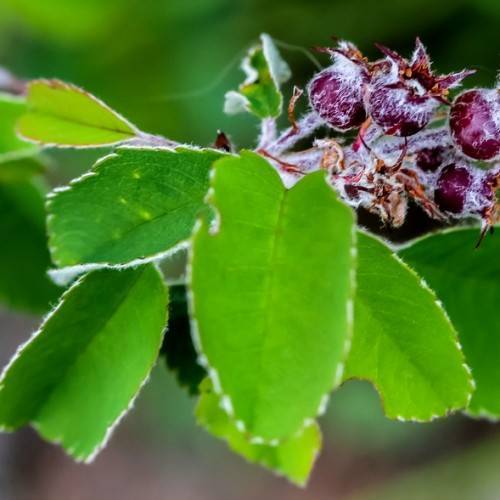
coastal serviceberry
Amelanchier obovalis
Cycle:
Perennial
Watering:
Average
Hardiness Zone:
5 - 8
Flowers:
Flowers
Sun:
full sun,part shade
Fruits:
Fruits Ready In Fall
Edible:
Yes
Leaf:
Yes
Growth Rate:
Low
Maintenance:
Low
Drought Tolerant:
Yes
watering
Coastal serviceberry (Amelanchier obovalis) requires moderate watering with adequate drainage. It should be watered once a week, with more during periods of extreme heat. The soil should be kept moist, but not overly saturated. Allow the top 2 inches of soil to dry out between waterings.
sunlight
Coastal serviceberry (Amelanchier obovalis) prefers full sunlight and is drought-tolerant. For optimal growth and flowering, ideally it should receive 6-7 hours of full sunlight each day either in the morning or the afternoon. During the growing season, it should receive about 8 hours of sun every day. In some climates, it may be better for it to receive some light shade if the temperature is too hot or the soil is very dry.
pruning
Coastal serviceberry (Amelanchier obovalis) should be pruned in late winter or early spring (February or March) for best results. Prune lightly, removing no more than 1/3 of the previous years growth. Remove any dead, diseased, or damaged branches. Cut back long stems to the desired shape or reduce the overall size of the plant. Remove any low-growing shoots from the base of the trunk. This will promote better air circulation and allow light to penetrate the center of the plant. Do not prune too severely as this will reduce the amount of blooms the plant produces.
